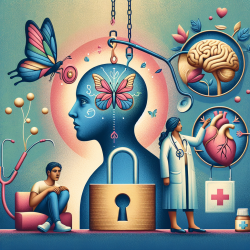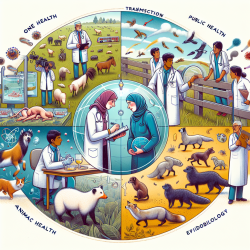Understanding the Impact of ACEs and Bullying on Adolescent Mental Health
As practitioners in the field of education and mental health, understanding the complex interplay between adverse childhood experiences (ACEs) and bullying victimization is crucial for developing effective interventions. A recent study titled "The Association Between Adverse Childhood Experiences (ACEs), Bullying Victimization, and Internalizing and Externalizing Problems Among Early Adolescents: Examining Cumulative and Interactive Associations" sheds light on this intricate relationship.
The Research Findings
The study analyzed data from 8,085 participants aged 9-10 years, part of the Adolescent Brain Cognitive Development (ABCD) study. It explored the associations between ACEs, bullying victimization, and mental health problems, adjusting for various demographic factors. The findings revealed that both ACEs and bullying victimization were independently linked to higher internalizing (e.g., anxiety, depression) and externalizing problems (e.g., aggression, rule-breaking).
Interestingly, the study found no significant interaction between ACEs and bullying victimization, suggesting that these factors contribute to mental health issues through a cumulative risk model rather than an interactive one. This means that each experience independently adds to the risk of developing mental health problems, aligning with the cumulative risk theory.
Implications for Practitioners
These findings have significant implications for practitioners working with adolescents. Here are some key takeaways:
- Screening and Early Intervention: Incorporate screening for both ACEs and bullying victimization in routine assessments. Early identification can lead to timely interventions, potentially mitigating the long-term impact on mental health.
- Holistic Approach: Consider the cumulative effect of multiple adversities. Interventions should address the broader context of a child's experiences rather than focusing on a single issue.
- Collaboration: Work closely with educators, parents, and mental health professionals to create a supportive environment for adolescents, addressing both ACEs and bullying.
Encouraging Further Research
While this study provides valuable insights, it also highlights the need for further research. Understanding the specific mechanisms through which ACEs and bullying affect mental health can enhance intervention strategies. Future studies could explore:
- The role of protective factors that may buffer the impact of ACEs and bullying.
- Longitudinal studies to track the long-term effects of these experiences on mental health.
- Exploring the impact of different types of ACEs and bullying on various mental health outcomes.
To read the original research paper, please follow this link: The Association Between Adverse Childhood Experiences (ACEs), Bullying Victimization, and Internalizing and Externalizing Problems Among Early Adolescents: Examining Cumulative and Interactive Associations.










